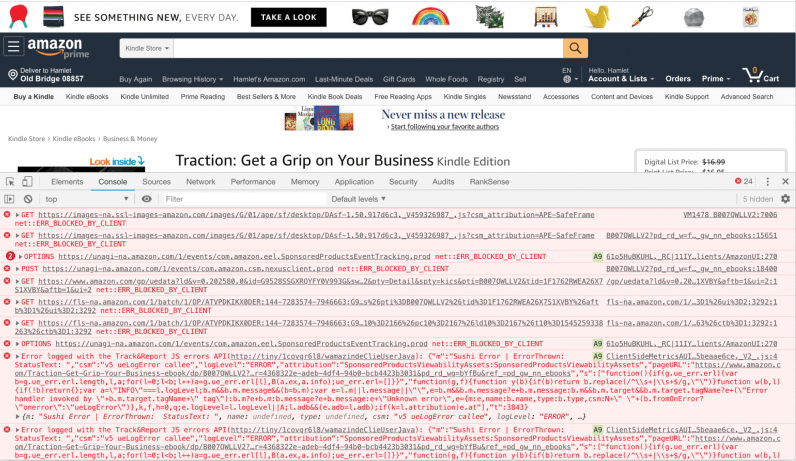Digital advertisers know they’re screwed. Digital marketers don’t.
Considering statistics like one in four US internet users are now blocking ads on a regular basis, coupled with the ongoing privacy battles over user data, it’s easy to see the challenge for digital advertisers. This problem is amplified by privacy activists, such as Apple, which are releasing tools and pushing for regulation that makes it even harder for companies to track their users.
The less obvious consequence of these ad-blocking activities, however, involves not digital advertisers, but digital marketers — that is, the people responsible for understanding and deciding what content best resonates with their audience.
What many digital marketers have yet to recognize is that, as ad blocking has become more widespread, the quality of data from their website analytics has suffered immensely. This is because many popular ad blockers, such as uBlock Origin, block scripts for page analytics in addition to advertisements, making it much harder to track visitors on company websites.
As a result, it has become increasingly difficult for digital marketers to accurately assess things like which topics or articles have the most engagement, which newsletters lead to the most conversions, and which social media strategies get the most shares. In turn, this raises the concern that marketers probably aren’t spending their budgets as efficiently as they think.
Digital marketers are senseless casualties in the war against advertising
Internet users may not want to see ads or have their data tracked, but they still want to consume relevant content. In fact, a recent survey from Adobe found that a full two-thirds of respondents believed it was important for brands to personalize content. However, this will be increasingly difficult for brands without accurate website analytics — the kind which many ad blockers are preventing.
In this way, digital marketers have become senseless casualties in the war between advertisers on one end and consumers and privacy activists on the other.
Unlike digital advertisers, which desire as much granularity as possible with user data to boost their chances of making a sale, the affected digital marketers are simply looking to know how well the information on their websites resonates with their users. The end goal is to help guide their content creation strategies with the end goal of improving the user experience.
User experience will suffer as ad blocking continues
When functioning properly, companies’ website analytics provide treasure troves of information that can help inform their approaches to brand positioning and marketing. The data allows them to see how many views there are for each page on the site, how visitors accessed the page, how long they stayed, where they’re located geographically, and more. By analyzing this data, digital marketers can better understand exactly what type of content draws the most traffic — and produce more content just like it to best suit their audiences’ desires.
Given the fact that many ad blockers such as uBlock Origin — which, alone, has more than 10 million users — stop the scripts for page analytics, digital marketers might not even know they are guessing when designing their content strategies, using incomplete information about what their audiences like. Any attempts at testing engagement with “minimum viable content” or otherwise will therefore fall flat, corrupting marketers’ understanding of their audiences’ true preferences.
There’s another user experience problem resulting from these ad blockers that’s a bit more glaring: The ad blockers are also killing scripts that provide important features to websites, thereby breaking their functionality.
For example, this is an Amazon product page with uBlock turned off and then turned on.


Marketers, make your case to keep analytics!
One way to potentially solve the analytics problem caused by ad blockers is for marketers to collectively make a case for the creators of ad blocking tools to stop blocking analytics scripts, explaining the negative implications of their doing so. In the meantime, however, there is a technical solution that web developers can implement, which involves tracking users offline.
In a previous article, I provide a detailed explanation of how to implement the solution, along with the actual code required to do so. Essentially, it is a two-step solution that involves first detecting when analytics scripts don’t load, and then sending requests through the back-end to track website visitors offline. This library at GitHub is a great place to get started with sending Google Analytics events server side.
The main challenge with this offline tracking is that it is hard to accurately track users. You will likely end up counting some bots as well.
The war against advertisers and their questionable use of user data shows no signs of slowing down. As such, the only way for digital marketers to fight back is to turn their attention to the creators of the ad blocking tools themselves.
Overall, there is a low awareness of the website analytics issue that comes with ad blocking, so making the problem known is a huge first step. The next step is getting the creators of ad blockers to make the necessary changes, because at the end of the day, it’s in everyone’s best interest to keep these analytics running smoothly.
Get the TNW newsletter
Get the most important tech news in your inbox each week.






